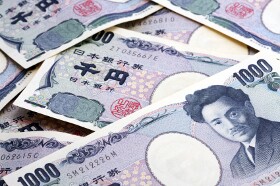The Japanese yen is trading relatively flat against some of the most-traded currencies in the market as a string of disappointing data has elevated recession talk. After some reprieve from bearish data, it looks like the worldâs third-largest economy is still unable to rejuvenate growth, despite the governmentâs planned $120 billion stimulus. The question that is now dominating global financial markets is: Whatâs next?
The Ministry of Economy, Trade, and Industryâs All Industry Activity Index slipped to 103.6 points in October, down from the 108.2 reading in September. For most of 2019, the index has been residing in the 106-point range.
The Cabinet Officeâs Coincident Index, a measurement of economic activity using employment, retail sales, and factory output, came in at 95.3 in October. This is down from 100.4 in the previous month.
The Leading Economic Index recorded its third consecutive decline in October, clocking in at 91.6. This is the worst reading since November 2009. The index utilizes various economic indicators, such as consumer sentiment and job offers.
Investors may have been hoping for another life raft from the Bank of Japan (BoJ) on Monday. Instead, the central bank left its key short-term interest rate at -0.1% at its December policy meeting. The BoJ also kept its target for the 10-year Japanese government bond yield at 0%. Traders were pleased when the central bank maintained its optimistic outlook on the Japanese economy in 2020, even though the data suggest that the national sales tax hike has impacted growth.
Minutes from the meeting revealed that some officials recommended integrating monetary and fiscal policy amid brewing risks from ultra-low interest rates.
The BoJ should prepare for the next economic downturn as among risk scenarios. In doing so, itâs important not only to take monetary policy action but enhance cooperation with the government
Next on the data front will be foreign bond investment and stock investment by foreigners on Wednesday. Later this week, an influx of numbers will be published, including November retail sales, the unemployment rate, housing starts, construction orders, and preliminary industrial production.
The USD/JPY currency pair rose 0.02% to 109.41, from an opening of 109.40, at 12:44 GMT on Tuesday. The EUR/JPY slipped 0.08% to 121.21, from an opening of 121.32.
If you have any questions, comments, or opinions regarding the Japanese Yen, feel free to post them using the commentary form below.
